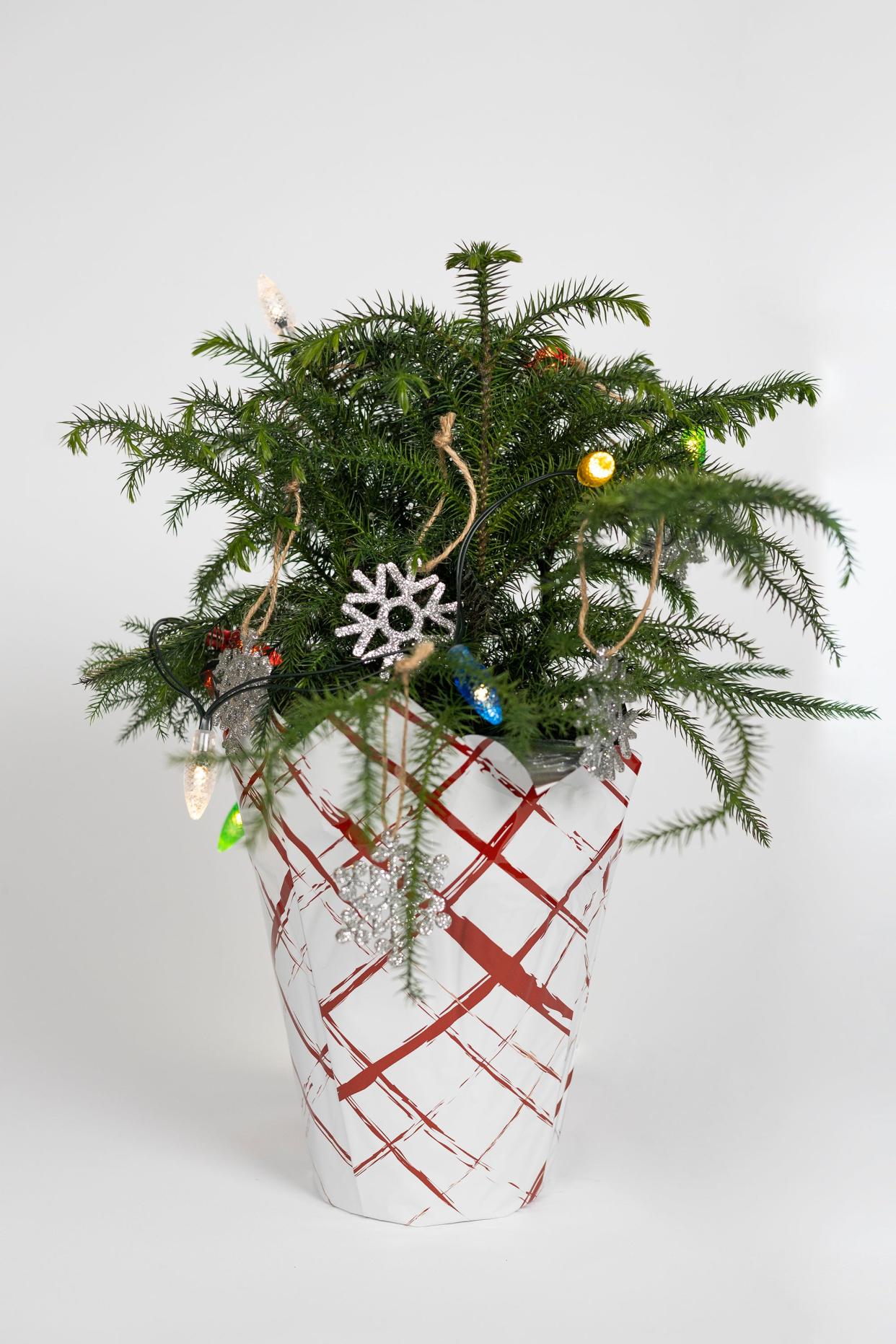Before you gift that Norfolk Island Pine, you should know this

December is holiday season to many and this can extend to your garden and landscape. With cool temperatures many plants are now dormant, some pests and diseases dissipate for the time being, and you now get a well-deserved break from mowing, pruning, fertilizing, and irrigating. However, if you so choose, you can still have a thriving garden this winter.
Before you gift a plant this Christmas, do this
Plants can make great gifts but it is important to understand what you are buying and giving away. There is usually a wide variety of house and landscape plants available in garden centers with some being extremely easy to keep alive and others being an advanced undertaking. This makes researching a plant you are gifting important. One way you can do this is access UF/IFAS Extension fact sheets or blogs as they will give you expert, research-based advice for caring for the plants in our area. One quick way to find these answers is to put the name of the plant along with the letters IFAS into your favorite search engine. If in doubt you can always contact your local UF/IFAS Extension office.
This research is important so the recipient can be successful and can give the plant the care it needs. For example, many people will overwater poinsettias (as well as other species), put plants in the wrong light, or try to place them outside when they can’t take the weather. Some plants like poinsettias and amaryllis can do great in the landscape but others will not. You may also want to consider if the plant is poisonous to kids or pets and how big it may get. Fun fact, poinsettias are not toxic to pets but can be an issue for people with latex allergies.
Holiday how-to: How to pick a real Christmas tree — and keep it alive for the holiday season
More holiday how-to: Amaryllis bulbs are popular holiday gifts. Here's how to care for them
What you should know about the Norfolk Island Pine
Every year I know it’s the holiday season when we see the arrival of the common gift plants in the garden centers. One of these is used as a living Christmas tree and is commonly known as the Norfolk Island Pine (Araucaria heterphylla). This tropical plant in fact is not a pine and the Norfolk Island it is named for is a South Pacific Australian territory and not the city in Virginia. These are fast-growing, evergreen plants that normally will die in our winters in Northeast Florida as they can only tolerate zone 10a or south. However, you may sometimes see one of these shooting upwards in the landscape.
While they can make a nice temporary indoor plant, they can eventually grow to a height of 60 to 80 feet and while rare, can produce cones weighing several pounds. A major negative characteristic of these trees is that they can be easily damaged or toppled by high winds so you should avoid planting them outside.
Big changes in horticultural zones
A big piece of news in the horticultural world this week was a shift in the USDA Plant Hardiness Zones for Florida. These zones are based on average winter low temperatures and are used to determine and describe how well a plant will survive the cold throughout the country. However, these are re-evaluated and there have been some significant changes for Northeast Florida.
Since I moved to the area in 2016, Clay County, Duval County, St. Johns, and most of Nassau County were all 9a (low temperatures of 20-25 degrees F). However, a large amount of Duval, Clay, Nassau, and all of St. Johns are now zone 9b (25-30 degrees F). The map can be viewed at planthardiness.ars.usda.gov and you can look up your zone by zip code. This information is important because some plants struggle with higher winter temperatures and we may start to see some invasive plants creep into our area that were not found before. On the bright side, you may be able to have a bit larger plant selection to choose from as plants less tolerant to the cold may start to survive winters in our area.
Did you know? Some wood not suitable for burning in pits, fireplaces
Things to plant in your garden in December
Vegetables: Cauliflower, Beet, Broccoli, Brussel sprouts, Cabbage, Carrot, Chinese cabbage, Collards, Kale, Kohlrabi, Leek, Onion, Parsley, Mustard and Radish.
Herbs: Parsley, Thyme, Sage, Dill, Fennel, Garlic, Comfrey and Cilantro.
Annuals: Petunia, Pansy, Snapdragon, Lobelia, Alyssum and Viola.
Bulbs, tubers, rhizomes, or corms: Agapanthus, Amaryllis, Aztec lily, Calla lily, Hurricane lily, Kaffir lily, Paper Whites, Shell Ginger, Spider lily and Zephyr lily.
Wayne Hobbs is an extension agent in environmental horticulture for Clay County.
This article originally appeared on Florida Times-Union: What you should know about the Norfolk Island Pine

